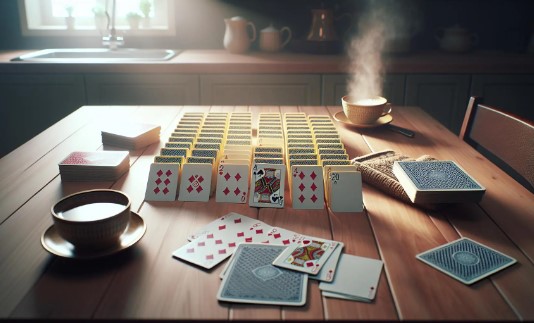Mastering FreeCell Card Game: Advanced Strategies for Expert-Level Success

Introduction
FreeCell, the captivating card game that tests strategy and patience, can be both a source of entertainment and a mental challenge. Although it might seem straightforward at first glance, advanced FreeCell layouts and scenarios demand more than just basic knowledge. Mastering these complexities requires a deep understanding of strategic moves and problem-solving techniques. This article delves into advanced strategies for tackling even the most challenging FreeCell card game layouts, offering valuable insights for seasoned players looking to elevate their skills.
Understanding FreeCell Basics
Before diving into advanced strategies, it’s essential to grasp the fundamentals. FreeCell is played with a standard 52-card deck, and the goal is to move all cards to four foundation piles, organized by suit in ascending order. The game uses eight tableau columns, four free cells, and four foundation piles. Cards are dealt face-up, which distinguishes FreeCell from many other solitaire variants where cards are hidden.
Read also: Step Up Your Marketing Game: Innovative Floor Graphics for Trade Shows and Events
Advanced Strategies for Conquering FreeCell
Mastering Card Movement and Sequencing
Effective card sequencing is crucial in FreeCell. Start by focusing on moving cards around the tableau to create empty columns. Empty columns are invaluable as they allow you to temporarily relocate cards, facilitating more strategic moves. When emptying a column, prioritize moving cards that help uncover hidden cards or allow for the completion of other strategic goals.
Additionally, plan your moves with a focus on building sequences in descending order and alternating colors. This practice enhances your ability to manage card placements and opens up more opportunities to reorganize the tableau effectively.
Optimizing the Use of Free Cells
Free cells are your primary tool for temporary card storage, and managing them wisely is key to solving complex FreeCell card game layouts. Avoid occupying all four free cells with cards if it hinders your ability to move other cards. Instead, use free cells strategically to facilitate critical moves, such as shifting cards to create space or to reorganize tableau columns.
Always plan several moves ahead when using free cells. Evaluate the potential impact of each move on your overall strategy, and avoid making hasty decisions that could limit your options in future turns.
Building Foundations Efficiently
Building foundations is a core aspect of FreeCell, and efficient foundation management is crucial for tackling challenging scenarios. Focus on moving cards to the foundation piles as early as possible. However, ensure that you don’t prematurely move cards that might be needed to uncover other cards or complete critical sequences.
When building foundations, prioritize cards that will enable you to uncover more hidden cards or facilitate the movement of other cards in the tableau. Maintaining a balance between building foundations and managing the tableau is essential for long-term success.
Utilizing Hidden Cards Strategically
Hidden cards are often the key to solving complex FreeCell layouts. Uncovering these cards can significantly impact your ability to manage the tableau and complete the game. Prioritize moves that uncover hidden cards while simultaneously creating empty columns or rearranging the tableau effectively.
Pay attention to the order in which you reveal hidden cards. Sometimes, uncovering specific cards first can unlock additional moves or make it easier to complete essential sequences. Developing a keen sense of which hidden cards to target can greatly enhance your problem-solving abilities in challenging scenarios.
Planning Moves with Long-Term Goals
Advanced FreeCell players excel at planning their moves with long-term goals in mind. Avoid making moves based solely on immediate benefits; instead, consider how each move will impact the overall game state. Develop a strategy that involves not only immediate card placement but also future implications for tableau organization and foundation building.
Regularly reassess your strategy as the game progresses. Adapt your approach based on the evolving layout and the cards that become available. Flexibility and foresight are key attributes of successful FreeCell players who tackle the most complex scenarios with ease.
Conclusion
Mastering the FreeCell card game requires more than just understanding the basic rules; it demands advanced strategies and thoughtful planning. By focusing on effective card sequencing, optimizing free cell usage, building foundations efficiently, utilizing hidden cards strategically, and planning moves with long-term goals, players can conquer even the most challenging FreeCell layouts.
With these advanced strategies, you’ll find yourself navigating complex scenarios with confidence and skill. Embrace the challenge and refine your approach to FreeCell, and you’ll unlock new levels of mastery in this intriguing card game.




